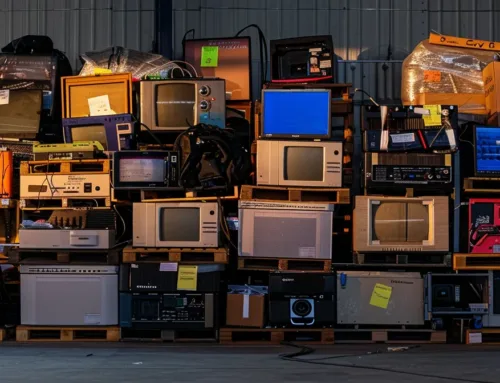
Liquidators seeking to maximize their profits in online auctions can benefit from End2End Logix Inc’s expert services. Our team provides comprehensive support, from selecting the best auction platforms to handling post-sale shipping logistics. We offer unique solutions like specialized cushion packaging and waterproofing to ensure your items arrive safely to buyers. In this article, we’ll guide you through the essential steps of mastering online auctions for liquidation. Contact us today to learn how we can help you streamline your auction processes and boost your bottom line.
Key Takeaways
- Assess inventory and compare auction platforms to find the best fit for your liquidation needs
- Create an engaging profile with high-quality photos to attract buyers and establish credibility
- Set competitive starting bids and reserves by analyzing market prices and considering product specifics
- Schedule auctions during peak traffic times to maximize visibility and potential sales
- Develop efficient shipping strategies to ensure safe and cost-effective delivery of liquidation items
Choosing the Best Auction Sites for Liquidation
When selecting auction sites for liquidation, you must carefully assess your inventory and compare platform options. Consider how each site’s customer service, line of credit offerings, and policies align with your company’s needs. Evaluate whether End2End Logix Inc platforms specialize in specific assets, such as straps or other niche items. A thorough analysis of fees, reach, and seller requirements will help you identify the most suitable auction sites to maximize your liquidation profits. contact us.
Evaluate Your Inventory for Potential Platforms
Assess your inventory thoroughly to determine which auction sites align best with your products. Consider factors like the potential for international shipping, especially for items like lawn equipment that may have global appeal. Evaluate how each platform’s pricing structure and shopping experience could impact your services bottom line. Don’t forget to factor in insurance requirements for high-value or fragile items when choosing a suitable auction site.
Research and Compare Site Fees and Policies
Compare the fee structures and policies of different auction sites to find the best fit for your liquidation needs. Look for platforms that offer competitive commission rates, especially for high-quantity sales of items like bamboo products or pallets. Review each site’s FAQ section to understand their policies on returns, shipping, and payment processing, ensuring they align with your business practices.
Setting Up Your Liquidator Profile Effectively
Setting up an effective liquidator profile is crucial for success in auction sites. You’ll need to craft a compelling description that highlights your expertise in handling liquidation stock, including specialties like embroidery or silk products. Showcase your inventory with high-quality photos that accurately represent your items, reducing the risk of returns. Remember to optimize your cart and checkout process to encourage buyers to complete their purchases. A well-crafted profile not only attracts potential buyers but also establishes your credibility as a reliable liquidator in the competitive online marketplace.
Crafting an Engaging Profile Description
Craft an engaging profile description that highlights your expertise in liquidation, emphasizing the quality of your products and your supply chain management skills. Showcase your specialties, such as leather goods, silver items, or specific display units, to attract buyers interested in these categories. Keep your description concise yet informative, demonstrating your professionalism and reliability as a liquidator.
Uploading Quality Photos of Your Inventory
Showcase your inventory with high-quality photos that capture every inch of your products, from inflatable castles to garden units. Ensure proper lighting and angles to accurately represent the condition and features of each item, helping buyers make informed decisions. Consider including images that demonstrate your logistics capabilities, reassuring potential customers about your ability to handle and ship various types of merchandise efficiently.
Strategies for Setting Starting Bids and Reserves
Setting starting bids and reserves is a critical strategy for liquidators on auction sites. You must strike a balance between attracting bidders and maximizing profits for your goods, whether you’re selling furniture, camouflage products, or dye-related items. By analyzing market prices and deciding between no reserve and reserve pricing, you’ll position your products competitively. This approach ensures you’re not leaving money on the table while still enticing potential buyers to participate in your auctions.
Analyzing Market Prices for Similar Items
Analyze market prices for similar items to set competitive starting bids and reserves. Research comparable products in your niche, considering factors like brand reputation, gold content, and consumer demand. Factor in sustainability practices, as eco-conscious buyers may pay a premium for environmentally friendly liquidation stock. Effective procurement strategies often involve a thorough understanding of current market trends and pricing dynamics:
- Monitor competitor pricing on auction sites
- Check retail prices for new versions of similar products
- Consider the condition and age of your liquidation stock
- Adjust for any unique features or sustainability certifications
- Factor in seasonal demand fluctuations
Deciding Between No Reserve and Reserve Pricing
Choose between no reserve and reserve pricing based on your liquidation goals and the nature of your inventory. No reserve auctions can attract more bidders for items like stainless steel cookware or sustainable consumer electronics, potentially driving up final prices through competition. Reserve pricing, on the other hand, ensures a minimum sale price for high-value items such as denim center displays, protecting your investment while still allowing for competitive bidding.
Mastering Auction Timing to Maximize Sales

Maximizing sales in liquidation auctions requires strategic timing. As a liquidator handling stock, customer returns, and overstock, you must understand how auction timing affects your bottom line. By identifying peak traffic times on different sites and scheduling your auctions around high-demand periods, you can increase visibility and potentially reduce fees. This approach allows you to optimize your liquidation company‘s performance, ensuring that your inventory reaches the right buyers at the most opportune moments.
Identifying Peak Traffic Times on Different Sites
Identify peak traffic times on different auction sites to maximize your liquidation sales. Monitor bidding activity and user engagement during various hours and days of the week to determine when quality products attract the most attention. Consider factors like time zones, especially for wire transfer payments, and adjust your auction schedules accordingly. Remember that peak times may vary for different product categories, such as dresses or industrial equipment, so tailor your approach based on your inventory. Regularly review and update your contact information to ensure potential buyers can reach you during these high-traffic periods.
- Analyze site analytics for user activity patterns
- Track bidding trends across different product categories
- Consider time zones for international buyers
- Adjust auction schedules based on peak traffic data
- Ensure your contact information is up-to-date for buyer inquiries
Scheduling Auctions Around High-Demand Periods
Schedule your auctions around high-demand periods to maximize your liquidation sales potential. Consider seasonal trends for items like garden furniture, aligning your listings with peak buying times. Monitor customer support inquiries to identify when buyers are most active, and adjust your auction start and end times accordingly. Remember to factor in credit processing times and account for delays in transactions involving large items like roof materials or bulk sand orders.
Navigating Shipping Logistics Post-Auction
After winning auctions for liquidation items, you must navigate the complexities of shipping logistics. Whether you’re dealing with office supplies, fiberglass products, or wood furniture, each category presents unique challenges. You need to consider packaging requirements, weight restrictions, and transportation methods to ensure your items reach buyers safely and cost-effectively.
For fragile items like fiberglass sculptures or delicate ribbon spools, you’ll need to invest in proper packaging materials and techniques. Wood products may require special crating to prevent damage during transit. You should also consider the most efficient shipping methods, whether it’s ground transportation for local deliveries or ocean freight for international buyers.
To streamline your post-auction shipping process, establish relationships with reliable shipping partners who understand the nuances of handling liquidation stock. You may want to offer multiple shipping options to your buyers, balancing speed and cost. Remember to factor in shipping costs when setting your auction prices to maintain profitability while offering competitive rates to your customers.
Conclusion
Liquidators can maximize profits by carefully selecting the right auction sites, crafting compelling profiles, and implementing strategic pricing. Effective inventory management and timing of auctions play crucial roles in attracting buyers and achieving optimal sales results. Navigating post-auction shipping logistics ensures customer satisfaction and maintains the liquidator’s reputation in the marketplace. This comprehensive guide equips liquidators with the knowledge and strategies needed to succeed in the competitive world of online auctions, from inventory assessment to final delivery.
Share This Story, Choose Your Platform!
Get In Touch
Phone: (847) 722-6942
Email: sales@end2endlogix.com
Web: end2endlogix.com


